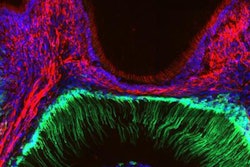
Researchers at the University of Pennsylvania School of Dental Medicine found that some taste receptors aren't solely located on the tongue but throughout the body, and these and smell receptors may lead to new therapies in dentistry.
Eventually, these sensors may help protect against periodontitis or lead to new ways to relieve dental pain, according to a university press release dated July 29.
Furthermore, taste receptors in the airways, gums, and dental pulp detect bacterial pathogens and allergens, triggering immune responses such as antimicrobial peptide production and activation of the trigeminal nerve.
In experiments using animal models, the research team showed that receptors in gum tissue provide natural protection against periodontitis. These receptors detect harmful bacteria and trigger the production of antimicrobial peptides to eliminate the germs. Without these receptors, mice experienced more severe periodontitis, according to the release.
The team is also studying odor-detecting receptors on neurons in dental pulp. Similar to taste sensors, these receptors respond to eugenol, an odor molecule from cloves, by numbing the teeth. Their goal is to leverage naturally occurring compounds like eugenol to activate these receptors in ways that enhance health and pain relief, according to the release.
"I think we are still at the tip of the iceberg," Marco Tizzano, PhD, an associate professor in the department of basic and translational sciences at the university, said in the release. "There is so much more to discover about these receptors."




















